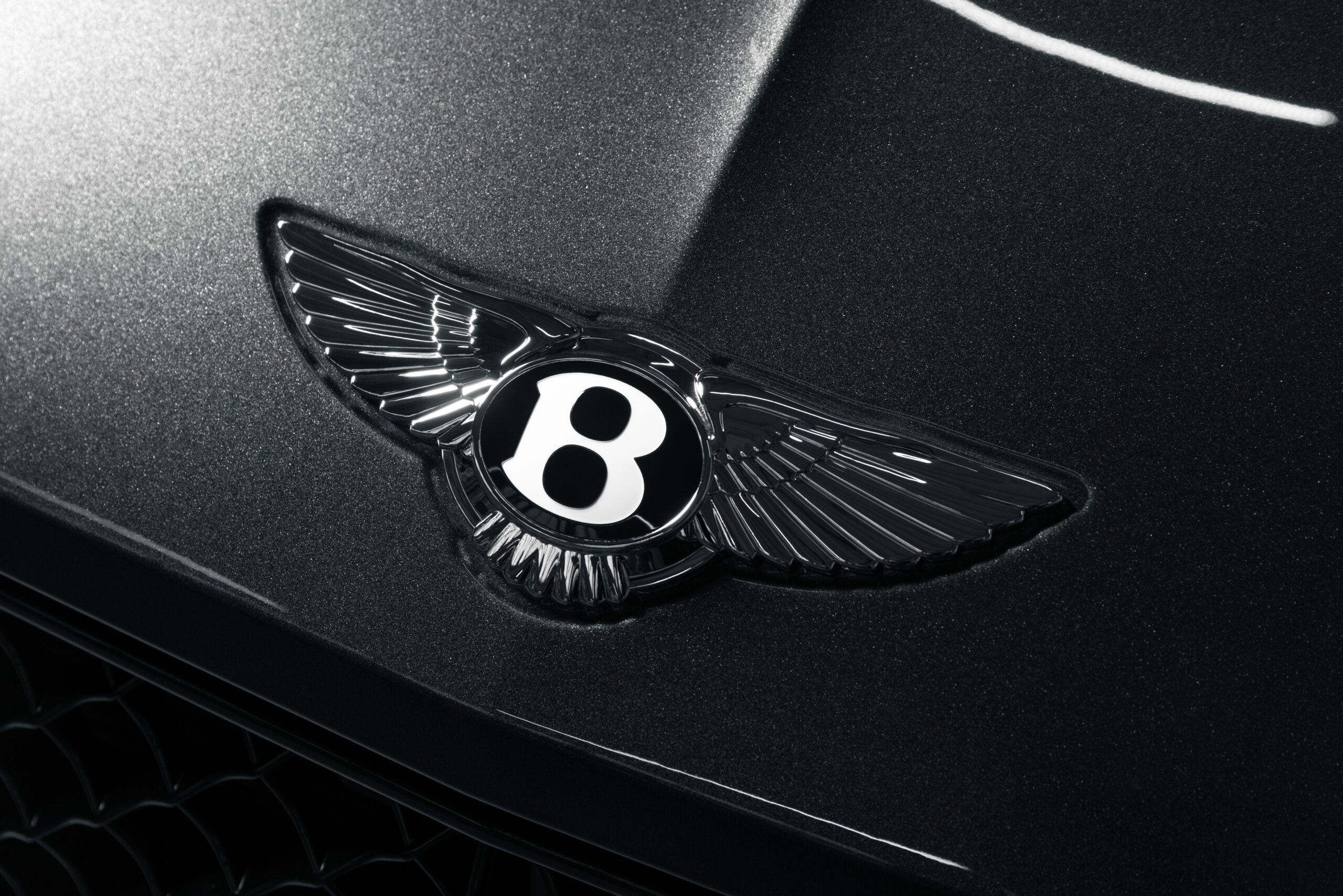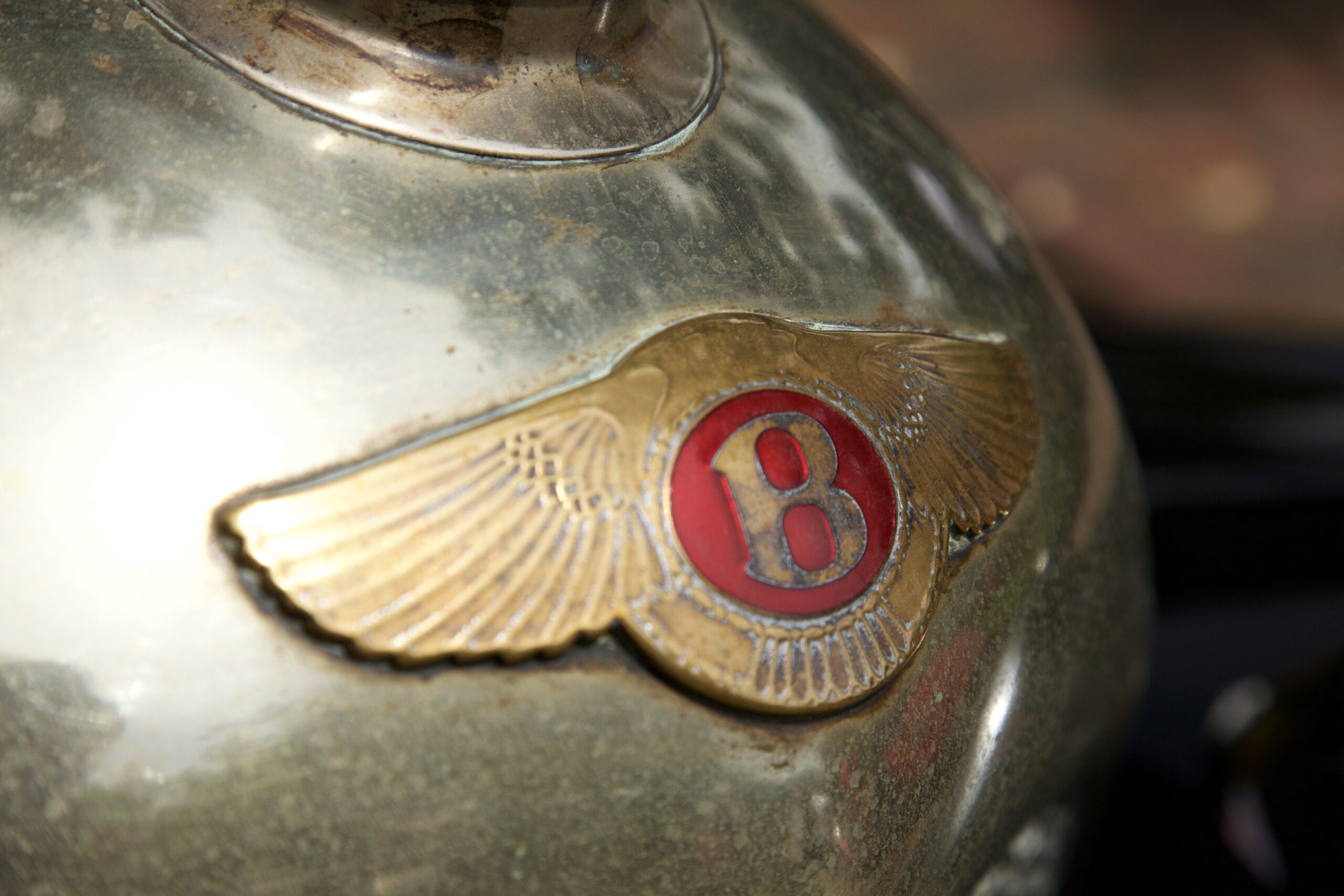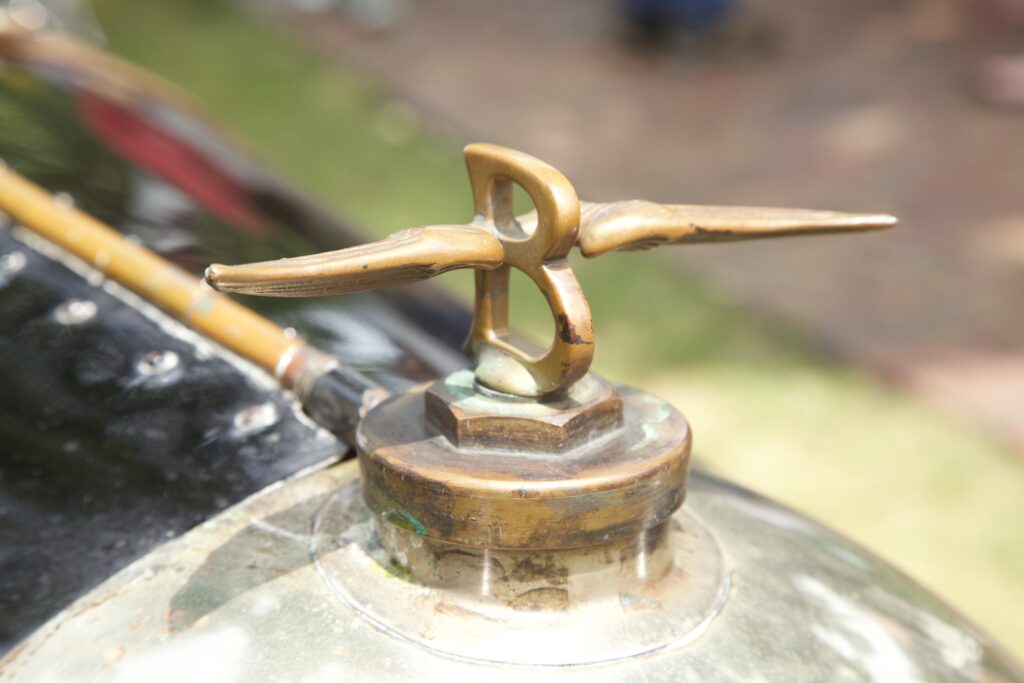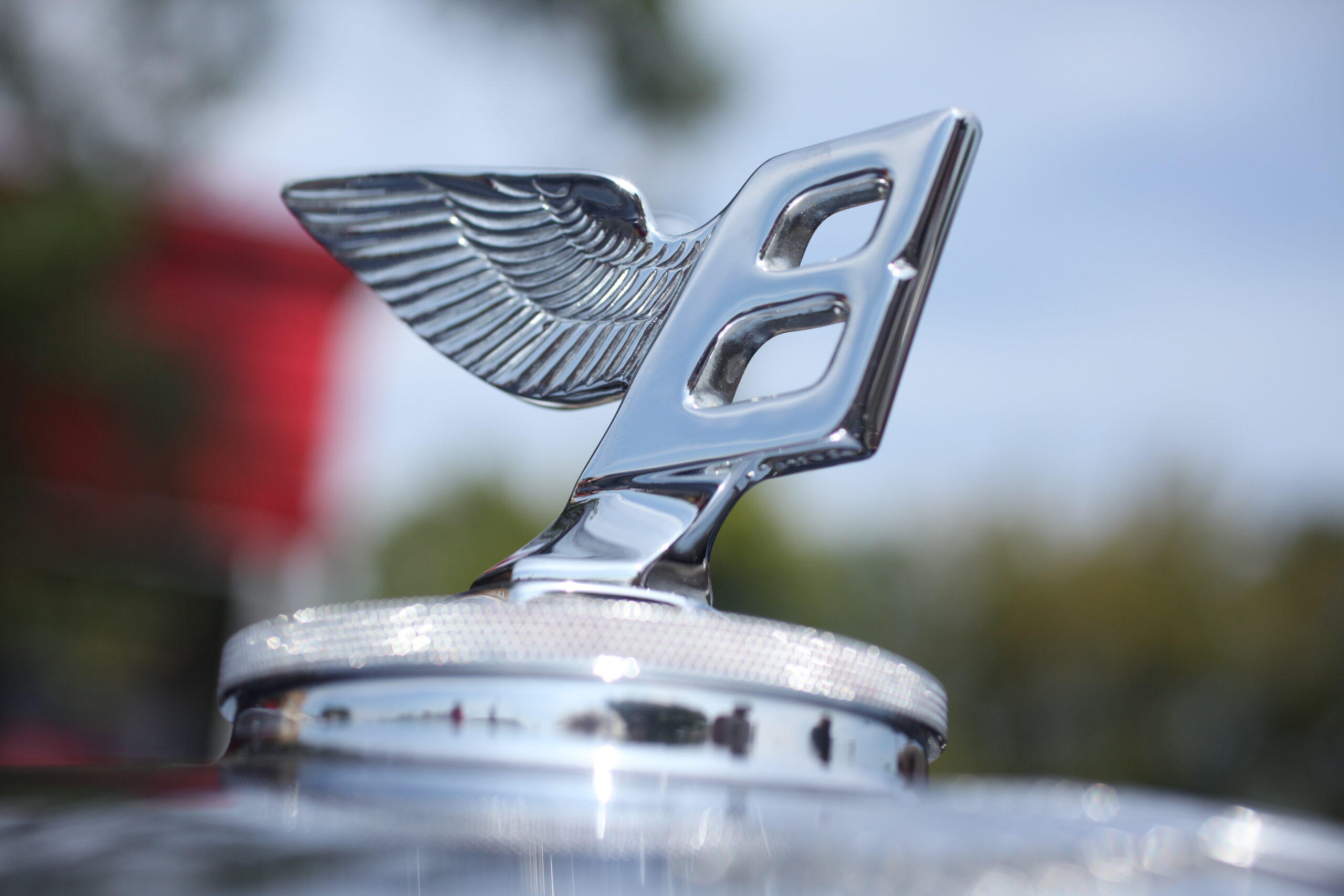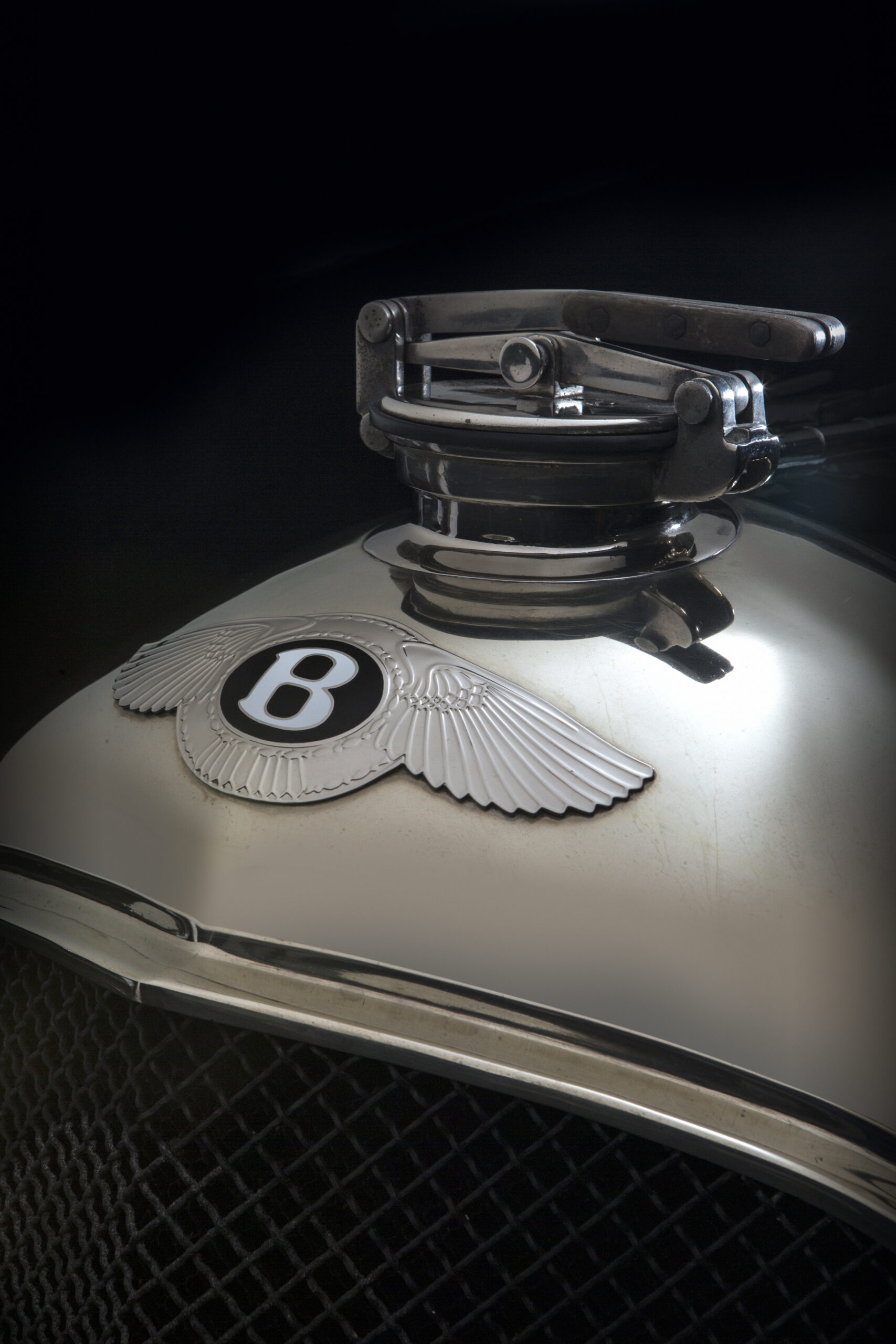He was a born engineer, but his first experience was not with motor cars – it was trains. In 1905, aged 16, he set off on his bicycle to work at the Great Northern Railway Locomotive Works in Doncaster, northern England.
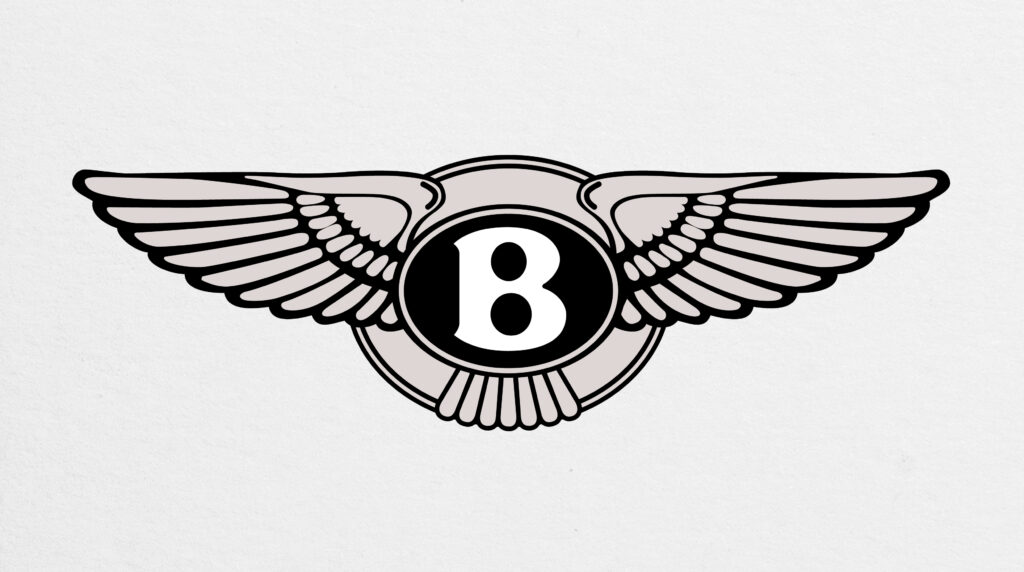
Off duty, he soon abandoned the push-bike in favour of motor cycling and with his brother took to racing. In their first event, the London to Edinburgh Trial, they won a gold medal. W.O. raced at the Isle of Man TT event and Brooklands race track, near London.
The internal combustion engine made sweeter music to his ears than steam trains and in 1912 Bentley’s family found funds enough to buy a small company importing French DFP sports cars.
It was on a visit to the DFP factory in 1913 that W.O. noticed an aluminium paperweight – and had the inspired idea of using the lightweight metal instead of cast iron to make engine pistons. The first such Bentley pistons went into service in aero engines for the Sopwith Camel, in service during the Great War.
After it, Bentley revived his motor car interests and in London set about development of a racing engine – Experimental Bentley No 1. “I wanted to make a fast car, a good car: the best in its class…”
And he did. In the ’20s, with the 3-litre, 85bhp engine providing speeds of 80 mph and more, Bentley Motors set numerous speed and endurance records, competed successfully at Indianapolis, the Isle of Man, and Brooklands – and became inextricably linked with the history of the famous 24 hour race at Le Mans. In the hands of the legendary Bentley Boys, Bentleys achieved Le Mans victories in 1924, 1927, 1928, 1929, and 1930 – taking first four places in 1929.
Yet despite its racing record and public acclaim, Bentley Motors was beset by financial difficulty. By 1931 the golden age was over, but as closure loomed, Rolls-Royce stepped in to save the Bentley name – and a new era began.

CHRONOLOGY.
January 1919 – Bentley Motors is established with H.M. and W.O. Bentley and H.M.J. Ward as directors.
October 1919 – The first Bentley is completed. The 3-litre is built in a workshop near Baker Street, London, and powered by a 65bhp four-cylinder 16-valve engine. The car is the first to carry Bentley’s hallmark radiator casing and flying ‘B’ insignia.
January 1920 – The first test of the 3-litre by The Autocar magazine prompts huge public interest.
May 1921 – Bentley achieves its first racing success with Frank Clement victorious at Brooklands.
September 1921 – Noel van Raalte takes delivery of the first production Bentley, a 3-litre saloon with bodywork by Easter. Built at a new factory in Cricklewood, it cost £1,050.
May 1922 – Bentley makes its first, and thus far only entry in the Indianapolis 500. It is driven by W.D. Hawkes to 13th place.
June 1924 – Now competing with official Bentley backing, Duff and Clement return to Le Mans and win outright.
June 1925 – Bentley announces it will build a new 6.5-litre six-cylinder model, priced £1,450.
March 1926 – The first 6.5-litre Bentley leaves the factory.
May 1926 – Bentley’s financial difficulties are eased with new investment from Woolf Barnato, who becomes company chairman. W.O. Bentley is appointed managing director.
June 1927 – Sammy Davis and Dr Dudley Benjafield nurse a badly damaged 3-litre home for an epic victory in the Le Mans 24-hour race. A 4.5-litre prototype Bentley crashes out of the race while leading.
June 1928 – Woolf and Bernard Rubin deliver Bentley’s third Le Mans win, driving the 4.5-litre ‘Old Mother Gun’.
September 1928 – The ‘Speed Six’ high performance 6.5-litre Bentley is revealed.
June 1929 – ‘Speed Six’ Bentleys claim the top four places at Le Mans. Race winners are Barnato and Tim Birkin.
June 1930 – Barnato and Glen Kidston are winners and another ‘Speed Six is placed second at the last Le Mans race Bentley will enter for 71 years.
September 1930 – The ultimate Bentley, the 8-litre, is launched, powered by a six-cylinder engine producing 240bhp. Only 100 examples were built.
May 1931 – Production of the 4-litre Bentley begins, using a 120bhp version of the six-cylinder engine. W.O. Bentley, who was not involved in the car’s development, criticised its lacklustre performance and considered it unworthy of the Bentley badge.
July 1931 – Bentley Motors calls in the receivers.
November 1931– Rolls-Royce buys the Bentley Motors business, thwarting an attempt by Napier to acquire the assets. W.O. Bentley remains with the company.
August 1933– Debut of the first Rolls-Royce-produced Bentley, the 3.5-litre. Built at Derby, it is based on a highly modified Rolls-Royce 20/25 chassis.
June 1935 – W.O. Bentley chooses not to renew his contract with the company and takes up the position of chief designer at Lagonda.
April 1936 – The six-cylinder engine is enlarged for a new 4.25-litre Bentley. It is equipped with twin SU carburettors and produces 126bhp. The car is offered in saloon, coupe and tourer body styles, priced from £1,430.
February 1939 – A 4.25-litre Bentley is built to special order with aerodynamic bodywork and goes on to provide a demonstration of high-speed cruising ability on Continental motorways. Named the Embiricos Bentley after its Greek owner, it creates a new Bentley design language.
May 1939 – Launch of the Bentley MkV, equipped with the 4.25-litre engine and independent front suspension.
June 1939 – George Paulin’s designs for the Embiricos Bentley are developed for the new production Corniche model, a car capable of more than 110mph.
July 1939 – The Crewe factory is opened.
July 1940 – Bentley and Rolls-Royce prototypes are sent to Canada as Britain stands alone against Germany in World War II.
August 1944 – The prototype models are brought back to Britain from Canada as the tide of the war turns.
May 1946 – The Bentley MkVI is launched. It is the first Bentley to feature a pressed steel body also the first to be built from standard Rolls-Royce components.
January 1947 – Rolls-Royce wins a legal battle preventing W.O. Bentley from giving his name to a new Lagonda model.
March 1949 – Bentley builds its first left-hand drive model, a MkVI.
June 1952 – The Bentley R-Type Continental makes its debut, a Mulliner-bodied coupe capable of 120mph. It is the last Bentley to be built with no equivalent Rolls-Royce model for 30 years.
September 1952 – The Bentley R-Type, successor to the MkIV is announced. Officially designated the Bentley Sports Saloon, it provides the blueprint for the Rolls-Royce Silver Dawn.
September 1954 – Drophead coupe and sports saloon versions of the Bentley Continental are introduced, with bodies by Park Ward.
April 1955 – The Bentley S Series is announced, powered by a new 4.9-litre version of the six-cylinder engine and equipped with automatic transmission. It is built at Crewe alongside the Rolls-Royce Silver Cloud.
September 1955 – Following the end of R-Type production in May, Continental models based on the S Series are introduced.
October 1957 – The lightweight Mulliner-bodied four-door Bentley Continental Flying Spur is launched.
September 1959 – The Bentley S2 is announced. It uses an all-new 6.2-litre aluminium V8 engine, replacing the six-cylinder unit originally developed for Rolls-Royce models in the 1920s.
October 1962 – The Bentley S3 is announced, offering more power and interior space. A total of 1,286 will be built, up to 1965.
October 1965 – The Bentley T Series is launched, almost identical in appearance to the Rolls-Royce Silver Shadow. It features a one-piece body, independent suspension and disc brakes. A two-door version follows six months later.
September 1967 – A drophead coupe version joins the Bentley T Series line-up.
October 1968– The London Motor Show displays a special Pininfarina-styled T Series coupe.
July 1970 – The V8 engine is re-engineered to increase capacity to 6.75 litres – the size it has remained to this day.
March 1971 – Both the Bentley T Series and Rolls-Royce Silver Shadow two-door saloon and drophead models are renamed Corniche.
August W.O. Bentley dies. He was 82.
February 1977 – The four-door Bentley T2 is announced, priced at £22,800 – the same as its Rolls-Royce Silver Shadow II equivalent.
October 1980 – Bentley’s Le Mans heritage is echoed in the name Mulsanne, given to the new development of the T Series. It is a bigger car inside and out and benefits from a new rear suspension design.
March 1982 – The high-performance Bentley Mulsanne Turbo is announced, capable of nought to 60mph acceleration in seven seconds and a 135mph top speed.
June 1984 – The Bentley Corniche is renamed the Continental and the Bentley Eight is launched, distinguished by a mesh front grille.
May 1985 – The legendary Bentley Mulsanne Turbo R is launched, the fastest road-going Bentley yet.
October 1987 – The Bentley Mulsanne S is introduced. All Bentley models now incorporate anti-lock brakes.
March 1991 – Unveiling of the Bentley Continental R, the first Bentley model with its own, dedicated body since the 1954 R-Type Continental.
September 1992 – The Mulsanne S and Eight make way for the new Bentley Brooklands.
January 1993 – All Bentleys built in 1993 carry the ‘flying B’ badge with a green background to celebrate the 50 years since Rolls-Royce acquired Bentley Motors.
March 1994 – The Bentley Java is one of the stars of the Geneva Motor Show, a two-door concept car based on BMW 5-Series underpinnings.
August 1994 – The Bentley range is extended with the Turbo S and Continental S versions. Enjoying a substantial increase in power, they are able to move from rest to 60mph in less than six seconds.
December 1994 – Rolls-Royce reaches agreement with BMW for future engine supply for Rolls-Royce and Bentley models.
March 1995 – The Pininfarina-designed Bentley Azure convertible is announced.
March 1996 – The 400bhp Bentley Continental T becomes the marque’s most powerful road car. The Bentley Turbo R Sport is introduced at the same time.
April 1998 – The Bentley Arnage is announced. Sharing the same body as the Rolls-Royce Silver Seraph, it is powered by a BMW V8 twin-turbocharged engine.
July 1998 – Volkswagen AG completes the purchase of Rolls-Royce Motor Cars for almost £480 million. BMW buys the rights to the Rolls-Royce name and it is announced that from midnight on December 31st 2002 Bentley and Rolls-Royce will be separate companies once again, after 67 years together.
October 1998 – Volkswagen AG announces it is to invest £500 million in the Bentley marque, its Crewe factory and the building of an all-new Bentley.
March 1999 – The Bentley Hunaudieres – a mid-engined concept car is unveiled at the Geneva Motor Show, fitted with Volkswagen’s radical eight-litre W16 engine.
September 1999 – The Bentley Arnage Red Label is launched. marking the return of the 6.75-litre V8 engine to the range.
November 2000 – Bentley announces it is to return to competition at Le Mans.
January 2001 – The Bentley EXP Speed 8 race car is presented at the Detroit Motor Show.
June 2001 – Bentley enters two EXP Speed 8s at Le Mans. The team of Andy Wallace, Eric van de Poele and Butch Leitzinger finishes third, bringing Bentley back to the podium for the first time in 71 years.
December 2001 – Bentley announces it will build the new State Limousine, to be presented by the British motor industry to The Queen to mark her golden jubilee in 2002. It will be the first Bentley to be used for state occasions.
January 2002 – The Detroit Motor Show hosts the debut of the 450bhp Bentley Arnage T. The first model in the Arnage Series Two range, it is the world’s fastest four door production saloon and the most powerful road-going Bentley yet.
March 2002 – The Geneva Motor Show introduces the Bentley Arnage R. Bentley begins a teaser campaign building up to the launch of its all-new model with silhouette images of the Continental GT.
June 2002 – First design details of the Bentley Continental GT are released, the most important new Bentley since the original 3-litre of 1919. A single Bentley is entered at Le Mans and finishes the race in fourth place.
September 2002 – The company is once more known by its original name: Bentley Motors. The Continental GT name is confirmed and the car, a design concept model, makes its world debut at the Paris Motor Show and earns huge critical acclaim.
October 2002 – The Continental GT’s UK debut at the British International Motor Show earns it the Car of the Show and the Luxury Car awards from the Institute of Vehicle Engineers.
January 2003 – Continental & Azure Final Series announced in Detroit
February 2003 – Continental GT wins Detroit Auto Show Design Awards
March 2003 – Bentley enters first race in USA since 1922. Third place
May 2003 – Le Mans test weekend – 1st & 3rd quickest
June 2003 – Bentley 1st & 2nd at Le Mans and CGT makes its dynamic debut at Le Mans
2003 Le Mans winners recreate 1927 celebratory dinner
July 2003 – CGT/Speed 8 at Goodwood
October 2003 – Bentley announces that they will not return to Le Mans
November 2003 – CGT is awarded L’Autobile piu bella del Monda (The most beautiful car in the world)
January 2004 – Arnage T24/RL by Mulliner at Detroit
CGT named car of the year by Robb Report
February 2004 – CGT is dream machine – Motor Week
March 2004 – 2005 Model Year Arnage is launched at Geneva Motor Show alongside the Bentley Limousine
2005
The Arnage Drophead Coupe is announced at the Los Angeles Motor Show (Jan). The Arnage Drophead Coupe was renamed the Bentley Azure at the Frankfurt Motor Show (Sept) when Bentley confirmed that the model would go into production.
The fastest four-door in the company’s history; a car that shares the heart and soul of the 198mph coupé from which it is born – the Continental Flying Spur is launched.
Sales increase to approx 8,500 due to the success of the Continental range of cars.
2006
The year of the convertible, Bentley launches both the Continental GTC and the new Azure.
The Continental GTC is the new luxury 2+2 convertible completes the Bentley Continental model range following the introduction of the highly successful Continental GT in 2003 and four-door Continental Flying Spur in 2005.
The new Azure becomes the flagship of the Bentley model range, reaffirming the company’s status as the prime provider of four-seater convertibles at the very pinnacle of the market
Sales exceed 9,200 due to further success of the Continental family (4,500 Continental Flying Spur sold in 2006)
2007
The new Bentley Brooklands is unveiled at Geneva Motor Show. The car marks the company’s return to the luxury coupé market and reaffirms its reputation as creator of the world’s most exclusive coupés.
(source: Bentley)
